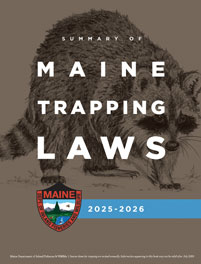Home → Hunting & Trapping → Trapping → Laws & Rules → Biological Samples
Biological Samples

Trappers and hunters are required to submit a lower jaw or tooth from every bobcat, fisher, marten, and otter that is trapped or hunted (see instructions below). A tissue sample (small piece of tongue or other meat) is also required from bobcats. These samples provide the Department with the age and sex of the harvest, which will improve the management of these species. While this is an extra burden on the fur harvesting community, the information gained will benefit these species for all Maine citizens.
Make Your Sample Count
MDIFW receives hundreds of broken and/or unlabeled tooth samples each year, meaning valuable data is lost. The lab uses tissue in the root of the tooth for aging. Roots extend far under the gums beyond what is visible. When jaws are cut off too short, not enough of the root is included for aging. Be sure to cut far enough back to include most of the lower jaw to avoid this problem. It is the hunter/trapper's responsibility to properly label each sample. Contact the Furbearer Biologist if you need jaw tag labels.
What Biological Samples are Required?
Submit the following samples to the fur tagging agent at the time of registration:
For Fisher, Marten, and River Otter
Trappers must provide a lower jaw or canine tooth from each fisher, marten, and otter taken.
- Samples must be labeled with the species, sex, town, method, and date or seal number (see Figure 1).
- Samples from each individual animal must be bagged separately.
For Bobcat
- Hunters and trappers must provide a lower jaw, canine tooth, or lateral incisor tooth from each bobcat taken.
- Lateral incisors are very small and easy to take when fresh before the animal freezes. Run a pocket knife down each side and gently rock the knife left to right to loosen and pull the tooth out (see Figure 2).
- Hunters and trappers must also provide a Starburst-sized meat sample (tongue works great) so the labeled sex can be checked with DNA. Please keep this sample frozen to protect it from rotting.
- Bobcat samples must be labeled with the species, sex, and seal number. Both meat and tooth samples from the same animal may be bagged together.
- Replacement incisors can be requested by contacting the Furbearer Biologist.
Hunters and trappers may request age results by including their name and contact information with their sample.
Contact MDIFW Furbearer Biologist, Shevenell Webb, with any questions at shevenell.webb@maine.gov or (207) 287-8776.

Figure 1. Lower jaw with completed label.
Arrow points to canine tooth.

Figure 2. Lower jaw of a bobcat.
Arrows point to lateral incisor teeth.